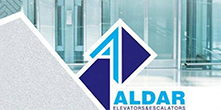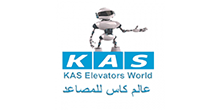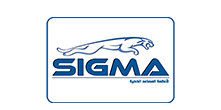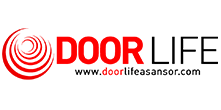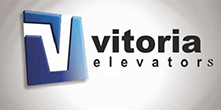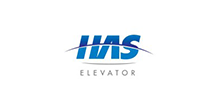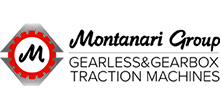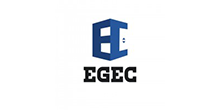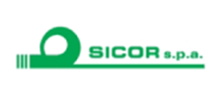Elevator control panel explanation
The importance of explaining the elevator control panel
The elevator
control panel is one of the most important components that contribute to
ensuring comfort and safety for users. Explaining the lift control panel is of
great importance, whether for users, operators or maintenance technicians. Here
are some reasons that highlight the importance of this explanation::
1.
Security guaranteeBy understanding how an elevator control panel works,
passengers can properly handle emergencies and use the stop or SOS buttons when
a malfunction or problem occurs. Explaining the control panel also helps reduce
the chances of errors that could lead to accidents.
2.
Ease of use: The control panel explanation helps users know how to use
the elevator comfortably and efficiently. This includes knowing which buttons
to press to reach the desired floor, and how to operate additional functions
such as speed control or steering.
3.
Improve operational efficiencyFor operators and technicians,
understanding the elevator control panel is essential to understanding how to
set up and operate an elevator efficiently. This helps reduce operational
problems and ensure that the elevator is operating to the required
specifications.
4.
Maintenance and safe operation: Control panel explanation helps
maintenance teams diagnose faults faster and more accurately. Understanding how
the buttons interact with the various systems inside the elevator can help
speed up repairs and ensure the elevator operates continuously and safely.
5.
Adapting to modern technologiesWith the advancement of technology, elevator
control panels have evolved to include smart features such as touch screens,
smart buttons, and advanced safety systems. Explaining these modern
technologies makes it easier to understand how to use them correctly and
enhances the user experience.
elevator control panel
An elevator
control panel is the device that allows users to control the elevator, either
to select floors or to perform other functions related to the operation of the
elevator. The control panel is usually located inside the cabin (where users
board) or in the lobby (where the elevator is requested from other floors). The
components of an elevator control panel can be divided and explaining the
elevator control panel helps in understanding. Therefore, the control panel can
be divided into several main parts.:
1.
ButtonsButtons inside the cabin allow passengers to select the
desired floor to reach, while buttons inside the lobby allow users to request
an elevator from a specific floor. Emergency buttons, such as the “Emergency
Stop” or “Close Doors” button, allow users to control emergency situations.
There are special buttons for accessibility for people with special needs, such
as a low-level push button for easy access.
2.
Display screenDisplays the current floor the elevator is on, as well as the
floors it is headed to, and may display warning signs or messages specific to
the elevator's status, such as "Elevator under maintenance."
3.
Light and sound indicatorsElevator control panel explanation is
essential for understanding the light indicators that show the elevator's
status, whether it is in "ready" (green light) or "closed"
(red light), as well as the audible alerts that are used to warn of doors
opening or sudden elevator stops.
4.
Security systems:An emergency button that can be pressed to stop the
elevator immediately in case of a problem, a system for communicating with the
main control unit or maintenance teams in case of an emergency, and
surveillance systems such as surveillance cameras (in some elevators) to
monitor the interior of the cabin.
5.
Additional functions:Smart control systems that may rely on touch screens
or voice systems, and elevators that support additional safety programs such as
controlling the number of passengers, or dealing with special conditions such
as access for people with disabilities.
Elevator control panel components
The elevator
control panel consists of several main components that contribute to the
operation of the elevator in an efficient and safe manner. The following is an
explanation of the elevator control panel and its components. This is necessary
to deal with the elevator effectively.:
1.
floor buttons: thatThey are used to select the floor that passengers wish
to reach, and are usually in the form of numerical buttons (such as 1, 2, 3…)
or may contain special floor markings such as ground floor or basement.
2.
Emergency buttons:A button to stop the elevator in case of an emergency,
also includes a "close doors" button and a "open doors"
button.
3.
Lighting and ventilation buttons: To control the operation of
lighting or ventilation inside the cabin, which is necessary for passengers.
4.
Buttons for people with special needs: Such as low-profile buttons or
volume buttons for easier access, making it easier for users with special
needs.
5.
Screen/DisplayOne of the important parts that must be explained is the
elevator control panel in order to deal with it, especially since it is an
important part of the elevators. It is the current floor display screen that
shows the floor the elevator is on or the floor it is heading to, and the alert
messages that may display notifications about the elevator status such as
“Elevator under maintenance” or “Doors open.”
Elevator control panel elements
The elements
of the elevator control panel must be understood and dealt with in order for
the elevators to be handled properly by the users. The following are some of
the elements of the elevator control panel:
1.
Light indicators:Floor lighting that is consideredLighting in the form
of colored lights or LED screens shows the location of the elevator and whether
it is ready for boarding. There is a warning light and there may be red or
yellow lights to alert when there is an error or problem with the elevator.
2.
Audio DevicesAudible alarms used to issue warnings when doors are opened,
when there is a malfunction or in an emergency, and audible alerts for users
with disabilities to direct passengers by voice such as “elevator on first
floor”.
3.
Security systemIn order to explain the elevator control panel, one must
understand the safety system, which includes the emergency buttons that are
used in the event of an accident or emergency inside the elevator. The
emergency buttons are used to stop the elevator or to activate the
communication system with maintenance or emergency teams, and the intercom
system that allows communication with the control unit or the emergency center
in the event of a problem or malfunction.
4.
Intelligent control systemsTouch screens are modern control
panels that may contain interactive screens that facilitate the selection of
floors or additional functions, and control systems via mobile phones or smart
cards, as some modern elevators allow control via smartphones or credit cards
integrated with the building’s smart system.
5.
Mechanical systemsSwitches and electrical switches are part of the
mechanical system that controls the movement of the elevator and links the
buttons with the motor and lighting system.
How to choose the right elevator control panel
Choosing the
right elevator control panel is a crucial step to ensure that the elevator
performs well and safely. The elevator control panel should be explained as
well as the factors that affect the control panel. Based on this, some factors
that should be taken into consideration when choosing an elevator control panel
are explained.:
1.
Number of floors and passengersThe elevator control panel should be
proportional to the number of floors and the expected number of passengers. The
more floors, the more buttons you may need to have to meet the needs of users.
In the case of elevators that handle a large number of passengers or in
commercial buildings, there may be a need to choose advanced control panels
that contain interactive screens or smart systems to facilitate use.
2.
Comfort and ease of useMake sure that buttons and switches
are clear and easy to reach, especially in elevators designated for people with
special needs, and choose control panels that contain distinctive buttons or
touch screens to facilitate choosing floors and ensure comfort for users.
3.
SecurityIn order to understand elevator safety, the elevator control
panel must be explained and understood. Therefore, the control panel must
contain safety features, such as emergency buttons that users can use in
emergency situations, such as sudden elevator stops or accidents. The audible
and lighting alarm systems must be effective and alert passengers in case of a
problem.
4.
Modern technologiesIt is best to choose a control panel that contains
modern technologies, such as touch screens or smart systems that allow users to
choose floors or other functions in an easy way. Some elevators now contain
features such as remote control using mobile phones or smart access cards.
5.
Flexibility and ease of maintenanceThe control panel should be easy to
inspect and maintain. Make sure the panel has components that can be easily
maintained in the event of a malfunction. Control panels that have replaceable
components or technical updates help ensure the elevator lasts longer. Elevator
control panel explanation helps in good and safe use for users which helps in
flexibility and ease of maintenance.
6.
Building compatibilityMake sure that the control panel
matches the building design and interior decoration style. You may want to
choose a control panel that is integrated with the building design or
specifically designed to suit a particular environment. Modern control panels
have sleek, contemporary designs that are compatible with different types of
buildings.
Precautions for handling elevator control panel
Dealing with
the elevator control panel requires following specific precautions to ensure
safety and avoid any problems or errors that may lead to the elevator
malfunctioning or endangering users. The following are the most important
precautions that must be taken into account::
1. Under normal
use:Repeated or
excessive pressing may damage the buttons or malfunction the control panel.
Pressing once gently is enough. Be sure to check the floor button you have
selected to avoid reaching the wrong floor. If the elevator stops working after
pressing one of the buttons, do not try to randomly press the rest of the
buttons. Instead, use the emergency button. The explanation of the elevator
control panel helps in case of using the elevator..
2. In emergency
situations:Do not
press the emergency button unless you are facing a situation that requires it,
such as a stopped elevator or someone is stuck. If there is a telephone or
intercom system in the elevator, use it to communicate with the maintenance
team or management. In the event of a malfunction, it is important to remain
calm and await instructions..
3. For children
and the elderly:Do
not let children play with the control panel or press buttons randomly, as this
can confuse the elevator operation. If there is an elderly person or someone
who has difficulty using the control panel, provide assistance to avoid any
mistakes..
4. Prevention of
electrical hazards:Moisture
can cause electrical short circuits or damage to the panel. The control panel
contains complex electrical components and should only be handled by
professionals. If you notice broken buttons or exposed wires, notify the
building management immediately..
5. Maintain
cleanliness and maintenance:Explaining the elevator control panel helps in proper
handling, and avoiding touching the buttons with dirty hands to keep the panel
clean. It is necessary to ensure that the building management performs periodic
maintenance of the control panels to ensure their safety, and do not use keys or
any sharp tools to press the buttons to avoid scratching or damaging the panel..
6. In case of
power outage:In the
event of a power outage, press the emergency button and wait for power to be
restored. If an elevator breaks down between floors, do not try to open the
doors manually, but wait for the rescue team to arrive..
Frequently Asked Questions
Does the
elevator draw electricity?
The home
elevator is not considered a device that consumes large amounts of energy.
However, it is difficult to provide an accurate answer about its electricity
consumption due to the influence of many factors, such as the type of elevator,
its height, and the technologies used to save energy. It is worth noting that
modern home electric elevators are characterized by lower energy consumption
compared to old elevators..
Is there
a risk of power failure in the elevator?
Yes, power
outages can be dangerous in an elevator, but they are limited by modern
emergency systems such as backup batteries and rescue systems that ensure
interior lighting and allow doors to be opened or the elevator to be safely
lowered to the nearest floor.
Conclusion
Explaining
the elevator control panel is important to connect the user to the internal
operating system of the elevator, because by understanding the elevator control
panel, the user can properly handle the elevator without harming it or using
the elevator improperly.
It is worth
noting that with modern technological developments, control panels have become
more intelligent and efficient, as technologies such as digital screens, remote
control, and biometric systems have been added, which have contributed to
improving the user experience and increasing security. They have also become
durable and easy to use thanks to materials that are resistant to damage and
germs..
Finally, the elevator control panel remains a vital component in the design of modern elevators, and its continuous development reflects the advancement in the field of safety and comfort. It is important to use these panels with caution and adhere to the instructions to ensure their efficient and fault-free operation.


